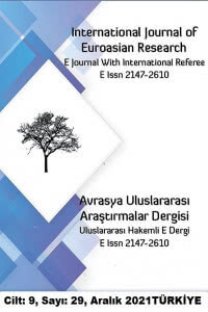RUS EDEBİYATINDA VE SİNEMASINDA BİLİM KURGU
Aydınlanma ve Sanayi Devrimi ile her bireyin yaşamına nüfuz eden bilim ve teknoloji 20. yüzyılda insanlık tarihi boyunca kat ettiği mesafeden daha fazla bir gelişim göstererek insanlığın başta gündelik hayatı olmak üzere tüm alanlar üzerinde bütünlüklü bir hâkimiyet elde etmiştir. Bu süreç aynı zamanda insanlığın düşünce dünyasında da çok çeşitli tezahürlere neden olmuştur. Bilim ile teknolojinin insan yaşamına etkilerinin olumlu ve olumsuz yönleri göz önüne alınarak ütopik ve distopik anlatılar üretilmiştir. İnsanlık tarihinin son 200-250 senesi bu düşüncelerin sadece sanatsal alanlarda değil aynı zamanda toplumsal ve siyasal alanlarda da çok çeşitli tartışmalara, kavramlara, kuramlara, olgulara ve pratiklere yol açtığına şahitlikle geçmiştir. Özelikle, bu kavramlardan biri olan bilimkurgunun yazınsal ve görsel sanatlardaki örneklerinin toplumsal ve siyasal etkileri de yadsınamaz bir gerçekliktir. Genel olarak bilimkurgunun 20. yüzyıl serüvenine dair bir inceleme aynı zamanda 20. yüzyılın toplumsal ve siyasal atmosferi hakkında derinlikli bir irdeleme imkânı da sunmaktadır. Bu sebeple, bu çalışma ile Rus edebiyatında ve sinemasında bilimkurgu eserleri ve ortaya çıkış koşulları ele alınırken, bir yandan da dönemin toplumsal ve siyasal ahvalinin ipuçları izhar edilmeye çalışılacaktır.
SCIENCE FICTION IN RUSSIAN LITERATURE AND CINEMA
In the 20th century, science and technology, which penetrated into every individual’s lifeafter the Enlightenment and Industrial Revolution, gained a complete dominance overforemostly daily life of the humankind and all other fields by demonstrating a progress furtherthan the ground covered throughout the human history. This process at the same time hascaused various kinds of appearances within the world of thought of the humanity. Byconsidering the positive and negative effects of science and technology on the human life,utopic and dystopic narratives were produced. The last 200-250 years of the human historyhave gone by witnessing that these ideas created debates, concepts, theories, facts, andpractices not only within the fields of art but also in the social and political arenas. Particularly, itis an undeniable truth regarding the social and political influences of the literary and visualinstances of science fiction, which is one of these concepts. In general, an investigationconcerning the 20th century adventure of science fiction at the same time offers an opportunityfor a depth discussion in regards to the social and political atmosphere of the 20th century aswell. For this reason, by this article, while the science fiction works in Russian literature andcinema and the conditions cause to exhibit them will be handled, on the other hand, it will betried to disclose the hints of the social and political circumstances of the era.
___
- ASTRONAUTİX, “Road to the Stars”, http://www.astronautix.com/r/roadtothestars.html (21.06.2020).
- BANERJEE, A. (2012). We Modern People: Science Fiction and the Making of Russian Modernity. Middletown CT: Wesleyan University Press.
- BUCK-Morss, S. (2000). Dreamworld and Catastrophe: The Passing of Mass Utopia in East and West. Cambridge and London: MIT Press.
- CHRISTENSEN, P. G. (2000). Women as Princesses or Comrades: Ambivalence in Yakov PROTAZANOV'S “Aelita” (1924). New Zealand Slavonic Journal, 107-122.
- CHERNYSHEVSKY, N. (1989). What is to be Done? (Trans. by M. R. Katz). Ithaca and London: Cornell University Press.
- DİŞÇİ, Z. (2018). İnsan ve Vampir: Sadece Âşıklar Hayatta Kalır Filminde Varlığın Spinozacı Temsili. Art-Sanat Dergisi, 9, 367-384
- GEZGİN, U. B. (2016). Devrim Öncesi Edebiyatında Ütopya: Kızıl Yıldız Örneği. Evrensel Kültür Dergisi, 298, 86-89.
- ISAACS, R. (2018). Film and Identity in Kazakhstan: Soviet and Post-Soviet Culture in Central Asia. London-New York: I. B. Tauris.
- LANDON, B. (2002). Science Fiction after 1900: From the Steam Man to the Stars. New York: Routledge.
- LEWIS, C. S. (2008). From the Cradle to the Grave: Cosmonaut Nostalgia in Soviet and Post-Soviet Film. In S. J. Dick (Ed.), Remembering the Space Age (pp. 253-270). Washington DC: NASA.
- SAZONOV, A. (2015). Seven Soviet Sci-Fi Films Everyone Should See. Guardian, 28.04.2015, https://www.theguardian.com/world/2015/apr/28/cinema-seven-soviet-scifi-films (28.06.2020).
- STERLİNG, B. (2019). Science Fiction. Encyclopædia Britannica, 11.09.2019, https://www.britannica.com/art/science-fiction (05.07.2020)
- STRUGATSKY, A. & Strugatsky, B. (2014). Definitely Maybe (Trans. by A. W. Bouis). New York & London: Melville House Publishing.
- YILDIRIM, E. (2014). Sovyetler Birliği'nde Propaganda ve Proleter Hegemonik İdeolojinin Kurulumu Üzerine. Doğu-Batı Dergisi, 64, 271-293.
- YILDIRIM, E. (2016). Rus Gerçekçi Edebiyatının Ekim Devrimine Giden Sürece Etkileri ve Katkıları. Evrensel Kültür Dergisi, 298, 63-68.
- YILDIRIM, E. (2019). Yapay Zekânın Ekonomi Politiği. In H. Sağlam & C. Peker (Eds.), If Globalism is Dead- Long Live What? - Abstracts & Proceedings (pp. 239-247). 10. ICOPEC 2019: International Conference of Political Economy, June 25-28, 2019, İstanbul.
- ISSN: 2147-2610
- Yayın Aralığı: Yılda 4 Sayı
- Başlangıç: 2012
- Yayıncı: Kürşat Öncül
Sayıdaki Diğer Makaleler
KÜLTÜREL DİPLOMASİDE CİNSİYET, TÜRK KADIN DİPLOMATLARIN İŞLEVLERİ
PANDEMİ SÜRECİNDE EĞİTİMİN DÖNÜŞÜMÜ: ÇEVRİMİÇİ EĞİTİMİN SOSYOLOJİK YANSIMALARI
PANDEMİ SÜRECİNDE EĞİTİMİN DÖNÜŞÜMÜ: ÇEVRİMİÇİ EĞİTİMİN SOSYOLOJİK YANSIMALAR
'YENİ BÜYÜK OYUN'UN NE KADAR BÜYÜK OLDUĞU ÜZERİNE
SES-ANLAM-DUYGU İLİŞKİSİNİ KAVRAMADA FONOLOJİK FARKINDALIĞIN ROLÜ: BİR DURUM ÇALIŞMASI
Behice VARIŞOĞLU, Levent ŞAHİN
TÜRKİYE’DE ALEVİLİK- BEKTAŞİLİKLE İLGİLİ HAZIRLANAN SÖZLÜKLERİ ELEŞTİREL OKUMA DENEMESİ
